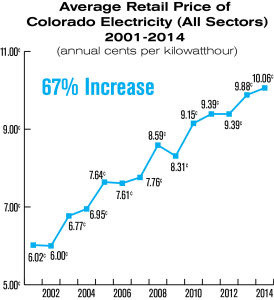Concentrating Solar Power (CSP) innovation including the utilization of mirrors to concentrate daylight onto a recipient that catches and converts the solar energy into heat for power age has been being used since the 1980s. The CSP innovation has, nonetheless, reappeared as a promising new green power innovation during ongoing years with new developments in various CSP frameworks and the creation of new solar warm Pulse Power rates stockpiling arrangements like liquid salt innovation.

The CSP frameworks presently being used are comprehensive of three sorts specifically, the box framework, the power tower framework, and the dish/motor framework. The box framework contains U-molded reflectors focussing daylight onto oil-filled pipes running along their middle with the hot oil bubbling water to produce steam for power age. The power tower CSP framework utilizes huge level mirrors called heliostats to concentrate sun rays onto a recipient sitting on a pinnacle in which liquid, for example, liquid salt can retain the intensity to make steam for guaranteed power age or store it for some time in the future.
The dish/motor frameworks utilize reflected dishes to concentrate and concentrate daylight onto a recipient mounted at the point of convergence of the dish. The collector is coordinated with an outside ignition motor which produces power as the concentrated daylight warms up extending hydrogen or helium gas contained in its slim cylinders driving the cylinder of the motor.
Worldwide CSP introduced a limit toward the start of 2013 and remained at 2.5GW with the US followed by Spain representing most of it. The as of late opened 320MW Ivanpah solar energy project in light of the power tower framework in California’s Mojave Desert in the US is the world’s greatest CSP plant. The 280MW Solana solar undertaking situated in Arizona, US, went into administration in October 2013 turning into the world’s greatest box framework-based CSP plant. The Solana office additionally offers six hours of liquid stockpiling ability to deliver power during the night.
A lot more CSP plants are presently being worked on across the world. The drawn-out likelihood of progress of the CSP innovation is obvious from the utilization of further developed nuclear power stockpiling answers for staying away from solar power’s most normal issue of discontinuity and the way that the gear utilized for ordinary fossil-fuelled power plants can be utilized for enormous scope CSP plants.
Drifting wind turbines
The business activity of drifting wind turbines could hold the way to opening the seaward wind power capability of more profound waters where winds are frequently more grounded and steadier. Dissimilar to ordinary seaward wind turbines that require the erection of substantial bases in the seabed, drifting wind turbines, given drifting oil and gas seaward stage innovation, are moored into the seabed with the utilization of only a couple of links at destinations as profound as 700m. More profound waters likewise offer the benefit of less prominent establishments.
The effective showing of a few model drifting wind turbines beginning around 2009, has produced interest for business organizations drifting wind turbines. Probably the best models incorporate the Dutch drifting turbine engineer Blue H Advancements’ test turbine off the shoreline of southern Italy, the oil and gas organization Statoil’s trial drifting wind turbine Hywind off the bank of Norway, and the Fukushima model drifting wind turbine off the bank of Japan.
Interest in wind power age from drifting turbines is particularly recognizable in nations like Japan which has been taking a stab at substitute power following the atomic debacle in 2011 however needs more shallow seaside waters to help regular wind ranches.






